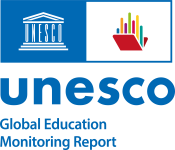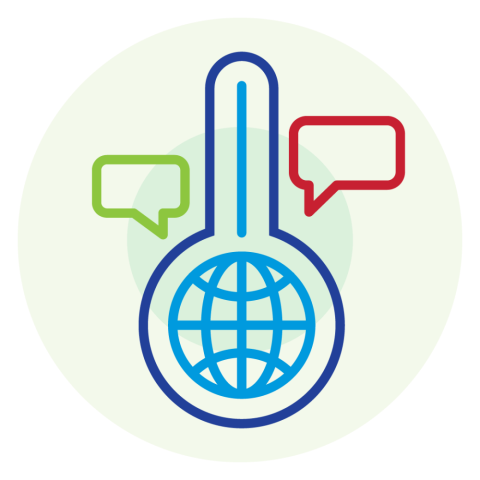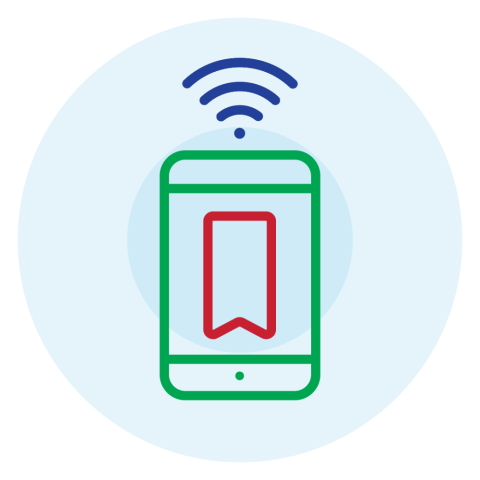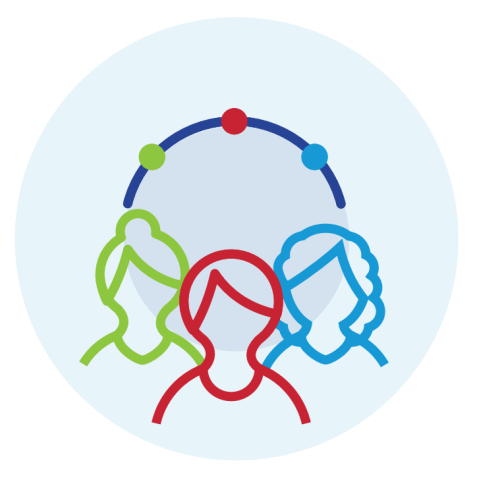Technology
2. Technology laws, policies, plans and regulations
2.1. Education technology legislative and policy framework
2.2. Technology infrastructures, technological capacity of schools and learning environments
2.3. Technology competencies of learners and teachers
3.1. Institutions in charge of technology in education and coordination mechanisms
1. Terminology
Various Chinese national education laws use terms related to technology in education. However, no definitions were found. The main terms used are: education informatisation, smart education, education digitisation, distance education, and online education.
The Key Areas of Work of the Ministry of Education in 2022 include education digitisation with regard to the implementation of the education digitisation strategy.
The 2021 Rural Revitalisation Promotion Law of the People’s Republic of China refers to remote education in the context of continuous improvement of the running conditions of rural schools and support for the development of online distance education. Remote education aims to “continuously improve the running conditions of rural schools and support the development of online distance education”.
According to 1995 the Education Law of the People’s Republic of China (amended 2021), the state promotes education informatisation, accelerates the construction of educational information infrastructure, uses information technology to promote the popularisation and sharing of high-quality educational resources, and improves the level of education and teaching and education management.
Education informatisation is also mentioned in such documents as the National Outline for Medium and Long-term Educational Reform and Development (2010-2020), the Education Informatisation 2.0 Action Plan, the 13th Five-Year Plan for Education Informatisation and the Ten-Year Development Plan for Education Informatisation (2011–2020).
The 2021 14th Five-Year Plan for the Development of Digital Economy refers to smart education in the context of incorporation of high-quality online resources into the public teaching system, promotion of online access to high-quality educational resources for weak schools in rural and remote areas, and the development of scenario-based, experiential learning and intelligent education management evaluation.
In the 1998 Higher Education Law of the People’s Republic of China (amended 2018) distance education is mentioned while describing state support for the use of radio, television, correspondence and other tools to implement higher education.
The 13th Five-Year Plan for Education Informatisation describes online education and sets the goals of developing online and distance education, promoting open sharing of various high-quality educational resources and providing services to the public.
2. Technology laws, policies, plans and regulations
2.1. Education technology legislative and policy framework
Constitution and laws: Article 66 of the 1995 Education Law of the People’s Republic of China (amended 2021) specifies that the state shall promote the development of information technology in education, accelerate the construction of information infrastructure for education, and use information technology to promote the popularization and sharing of high-quality educational resources and enhance the capability of education and teaching and the capability of educational management.
Article 7 of the 1998 Higher Education Law of the People’s Republic of China (amended 2018) specifies that the state supports the adoption of broadcast, television, correspondence and other modes of distance education to achieve higher education.
Article 25 of the 2021 Law of the People’s Republic of China on the Promotion of Rural Revitalisation specifies that the governments at all levels shall strengthen the coordination of rural education work, continue to improve the conditions of schools in rural areas, support the offering of distance education, and improve the quality of rural basic education.
The 2021 Scientific and Technological Progress Law of the People’s Republic of China has been revised several times. By improving the measures to guarantee scientific and technological innovation in a timely manner, the law provides guarantees for achieving a high level of self-reliance in science and technology.
Policies, plans and strategies:
The 2010 National Outline for Medium and Long-term Educational Reform and Development (2010-2020) proposed that attention must be given to information technology due to its revolutionary impact on education development. In March 2012, the Ministry of Education followed up on the outline by proposing the Ten-Year Development Plan for Education Informatisation (2011-2020), which clearly stated that by 2020 “the overall level of education informatisation will be close to the international advanced level, and its supporting and leading role to education reform and development will be fully realised”. The plan systematically expounded the important role of information technology in promoting educational equity, education quality, reshaping education conception, and transformation of talent cultivation. Goals included were for (1) each school should have access to broadband service, (2) each class should have access to quality education resources, (3) each student, their parents and teachers should have access to Internet learning space, (4) and at the same time, public service platforms should be set up for education resources and education management. This was later referred to as the “Three Accesses and Two Platforms” program.
Following the development plan, the 2012 "Full Coverage of Digital Educational Resources at Teaching Sites" Project was launched to provide equipment and resources for teaching sites in rural and remote areas and to help them open courses prescribed by the state.
In 2016, the Ministry of Education released the 13th Five-Year Plan for Education Informatisation, which proposed to ensure that by 2020 “anyone can learn anywhere and anytime”. The plan sought to form an education informatisation system in line with the national education development goals.
The 2021 14th Five-Year Plan for the Development and Improvement of Special Education proposed to promote the integration of information technology in special education; promote the construction of smart campuses and smart classrooms for special education; develop digital teaching resources; and promote the adaptation and integrated development of special children.
In 2018, the Ministry of Education issued the Education Informatisation 2.0 Action Plan, which proposed to take education informatization as a key driver of education system reforms. The plan aimed to ensure that by 2022, teaching applications were provided to all teachers, learning applications covered all school-age students, and digital campus constructions covered all schools (primary, secondary and high). The IT application level and the level of information literacy of teachers and students were to be improved, and a large-scale platform of “Internet + Education” were to be built.
In 2020, the Guiding Opinions of the Ministry of Education on Strengthening the Application of “Three Classes” proposed to help rural weak schools and teaching sites to open all compulsory courses through “oriented delivery classes” which aimed to rectify the problems of weak rural schools and teaching points such as a lack of teachers, insufficient teaching, and poor implementation of national prescribed courses. It adopts online specialized courses or synchronous classes, and uses the internet to push appropriate high-quality educational resources according to teaching progress to help them fully implement national prescribed courses, promote educational fairness and balanced development.
In 2021, the Ministry of Education and five other government agencies issued the Guidance on Promoting the Construction of New Educational Infrastructure to Build a High-Quality Education Support System which promoted the digital transformation of education and gave greater priority to data-driven education. The guidance document requires building “a new education infrastructure system with optimised structure, intensive efficiency, safety, and reliability” by 2025. On February 8, 2022, the Ministry of Education released the Key Areas of Work of the Ministry of Education in 2022, which proposed to "implement a strategic initiative on education digitalisation".
Digital competency frameworks: In 2022, MOE released the current Compulsory Education Curriculum and Standards for 16 subjects. The curriculum and standards for information technology included the digital competency framework for students. In 2014, the General Office of MOE issued the IT Application Competency Standards for Primary and Secondary School Teachers (trial version). In 2022, China issued the Teachers’ Digital Literacy, an education industry standard which emphasises five dimensions of teacher digital competency.
Changes occurred as a result of COVID-19: The Guidance on Promoting the Construction of New Educational Infrastructure to Build a High-Quality Education Support System, and the Guiding Opinions of the Ministry of Education on Strengthening the Application of “Three Classes” were all proposed after March 2020.
2.2. Technology infrastructures, technological capacity of schools and learning environments
2.2.1. Technology infrastructure and digital capacity of schools
Electricity: Article 12 of the 1995 Electricity Law of the People’s Republic of China (amended in 2018) indicates that the state formulates relevant policies to support and promote electric power construction. Article 47 of the 1995 Electricity Law of the People’s Republic of China (amended in 2018) indicates that the state implements preferential policies for rural electrification and gives key support to the construction of rural electricity networks in ethnic minority areas, remote and poor areas.
Computers and devices: The 13th Five-Year Plan for Education Informatisation provides for “encouraging schools to create conditions for equipping teachers and students with teaching terminals”. In 2018, the Ministry of Education released the Specifications for Digital Campus Construction for Primary and Secondary Schools (for trial implementation) suggesting “to equip every classroom with an appropriate number of public computers that organically fit into the classroom environment”. According to the 2021 Guidance on Promoting the Construction of New Educational Infrastructure to Build a High-Quality Education Support System, “personal learning terminals that meet technical standards and learning needs are popularised in places where they are available to support personalised teaching and learning under network conditions.”
Internet connectivity: The Ten-Year Development Plan for Education Informatisation (2011-2020) called for all schools to have broadband access. In 2013, the State Council issued the Broadband China Strategy and Its Implementation Plan to “accelerate broadband network coverage in schools”. In 2018, the Ministry of Education and several other government agencies issued the Notice on the Implementation of the School Networking Initiative to comprehensively improve network access and bandwidth conditions of schools throughout the country by the end of 2020. The 2021 Guidance on Promoting the Construction of New Educational Infrastructure to Build a High-Quality Education Support System proposes to deploy fixed broadband networks of 10 Gbps for counties, 1 Gbps for high schools and 100 Mbps for primary and secondary schools.
2.2.2. Technology and learning environments
In 2016, the Ministry of Education released the 13th Five-Year Plan for Education Informatisation which proposes to “develop online education and distance learning, promote open sharing of various high-quality educational resources, and provide services to the whole society”. In 2018, MOE launched the Education Informatisation 2.0 Action Plan which specifies three main tasks, including building an integrated "Internet + Education" platform. In 2019, the Ministry of Education and eleven other agencies issued the Guidance on Promoting Healthy Development of Online Education to regulate “the development and use of quality online education platforms”.
On February 6, 2020, the Ministry of Education (MOE) issued the Notice on Supporting Education and Teaching with Information Technology during the Epidemic Prevention and Control Period prepared by the Office of the Leading Group for Responding to the COVID Epidemic, defining six major tasks such as “improving network support conditions, enhancing platform service capabilities, pooling resources from various social parties and adopting appropriate teaching methods”. For preventing and controlling COVID-19, the Ministry of Education issued the Notice on Enhancing Activities within the ‘Ensuring Learning Undisrupted When Classes Are Disrupted’ Initiative in Primary and Secondary Schools to further strengthen online learning guidance for this initiative to be implemented in an orderly, effective and in-depth manner, and to ensure the continuity of learning. A week later, on February 12, 2020, against the backdrop of the COVID-19 outbreak, an emergency policy initiative called “Suspending Classes Without Stopping Learning” was launched by the Chinese Government to continue teaching activities as schools across the country were closed. Four main resources are specified in “Suspending Classes Without Stopping Learning”: National Primary and Secondary School Network cloud platform, special TV channels, online learning platforms in some provinces, cities, and primary and secondary school; other resources (such as digital textbooks and digital teaching resource library).
The Smart Education of China (Basic Education) public service platform provides resources in various categories for autonomous learning, teacher’s preparation for lessons, two-teacher classrooms, homework assignments, Q & A, after-school service, and teacher training. The Higher Education and Vocational Education versions of the service also contain thousands of MOOCs, items of teaching materials, courseware, cases and other resources.
2.3. Technology competencies of learners and teachers
2.3.1. Learners
On April 16, 2018, the Ministry of Education released the Specifications on Digital Campus Construction for Primary and Secondary Schools (for trial implementation), which refer to basic information literacy of students in two aspects: 1) learning attitudes and awareness, and 2) learning methods and skills. The 2018 Education Informatisation 2.0 Action Plan emphasises that the importance of enhancing information literacy for building moral character and cultivating innovative talents should be fully recognised. With this in view, an information literacy evaluation index system for students should be developed, scaled-up assessments should be carried out, and targeted training and cultivation should be implemented.
On April 8, 2022, MOE releases the Compulsory Education Curriculum and Standards for 16 subjects. The curriculum and standards for information technology specify four core competencies for students in a competency framework, i.e., “information awareness”, “computational thinking”, “digital learning and innovation”, and “responsibility for information society”. These 4 core competencies support each other to promote students' digital literacy and skills.
These competencies can be found in the Information Science Curriculum Standards for Compulsory Education(2022), the Information Technology Curriculum Standards for General High Schools (2020), the Information Technology Curriculum Standards for Secondary Vocational Schools and the Information Technology Curriculum Standards for Higher Vocational Colleges(2021).
On January 28, 2021, MOE and other five departments issued Guiding Opinions on Strengthening the Construction and Application of Online Education Teaching Resources in Primary and Secondary Schools, which specify the vision of how to improve students’ information literacy. Governments at all levels should guide and promote primary and secondary schools to open full and complete information technology courses in accordance with the national curriculum programme and curriculum standards, organically integrate the cultivation of information literacy into the education and teaching of various subjects, cultivate students' information awareness and the ability to retrieve, identify and select information, and focus on improving students' digital learning and innovation skills, as well as their ability to use information technology to solve practical problems. IT courses should be actively promoted to be included in junior and senior secondary school academic level examinations, and students' information literacy should be included in their comprehensive quality assessment. The schools should be focusing on cultivating students' habits of scientific and rational use of electronic devices, controlling the time of use, safeguarding eye hygiene and paying attention to the prevention and control of myopia.
2.3.2. Teachers
In 2004, the Ministry of Education issued the Educational Technology Competency Standards for Primary and Secondary School Teachers (for trial implementation) which require primary and secondary school teachers to “master the methods of information retrieval, processing and utilisation; methods of common teaching media selection and development; general methods of teaching system design; methods of teaching resource management, teaching process management and project management, methods of evaluation of teaching media, teaching resources, teaching process and teaching effectiveness.”
In 2014, the General Office of the Ministry of Education issued the IT Application Competency Standards for Primary and Secondary School Teachers (trial version) emphasising five dimensions of teacher IT competency: 1) technology literacy, 2) planning and preparation, 3) organisation and management, 4) assessment and diagnosis, and 5) learning and development.
The Specifications on Digital Campus Construction for Primary and Secondary Schools refer to teachers’ basic information literacy in two aspects: 1) work attitude and ideological awareness, 2) teaching methods and skills.In 2018, MOE launched the Education Informatisation 2.0 Action Plan, which specifies teachers' information literacy improvement as one of three major tasks. Based on this plan, in 2019, MOE issued Guiding Opinions on the Implementation of the National Primary and Secondary School Teachers' IT Application Capacity Enhancement Project 2.0. The Capacity Enhancement Project 2.0 highlights the development of information-based education and teaching reform in schools to lead the training of teachers' IT application skills, seizes the "key groups", implements classification guidance and adapts to technological development, and proposes to build a school-based, classroom-based, application-driven, innovation-oriented and accurately assessed teacher information literacy by 2022.
The 2012 "Full Coverage of Digital Educational Resources at Teaching Sites" Project successfully trained teachers to master the methods of using digital equipment and resources.
Two rounds of training programs for improving teachers’ digital literacy have been implemented for more than 10 million primary and secondary school teachers, including kindergarten teachers across the country. In 2023, national teachers’ training will be carried out relying on the Smart Education of China platform to actively promote the digital transformation of teacher training.
In 2022, China issued the Teachers’ Digital Literacy, an education industry standard, to provide top-level planning and implementation guidelines for the training and development of teachers’ digital literacy in the new era.
2.4. Cybersecurity and safety
2.4.1. Data privacy
In 2016, the Standing Committee of the National People’s Congress passed the Cybersecurity Law of the People’s Republic of China requiring that “departments and the staff responsible for cybersecurity supervision and management maintain strict confidentiality regarding personal information, privacy and commercial secrets, and should not disclose, sell, or illegally provide this information to others.”
In 2017, the State Council released the New Generation Artificial Intelligence Development Plan with a view to “coordinate the use of big data infrastructure and strengthen data security and privacy protection” and “effectively strengthen the management and increase disciplinary actions against data misuse, violation of personal privacy, moral and ethical violations.”
The Data Security Law of the People's Republic of China of June 10, 2021, stipulates that “state bodies… shall, in accordance with the law, preserve the confidentiality of the data accessed in the course of performing their duties, such as personal privacy, personal information, commercial secrets, and confidential business information, and shall not divulge such data or illegally provide them to others.”
On November 14, 2021, the Cyberspace Administration of China issued draft Regulations on Network Data Security Management for public comments. This document stipulates in Article 43 that “Internet platform operators should establish systems for the disclosure of data-related platform rules, privacy policies, and algorithm policies, and promptly disclose the drafting and decision procedures, to ensure the fairness and equity of platform rules, privacy policies, and algorithms.
The 2014 Guiding Opinions of the Ministry of Education on Strengthening the Network and Information Security in Education stipulates a series of requirements for the education sector, such as establishing and improving the organization system, regulations and responsibility system for network and information security in education.
The 2021 Personal Information Protection Law of the People’s Republic of China is also relevant to the protection of personal data.is also relevant to the protection of personal data.
2.4.2. Online abuse and cyberbullying
In 2016, the Ministry of Education and eight other government agencies issued Guidelines on Preventing Bullying and Violence among Primary and Secondary School Students proposing to further strengthen positive publicity and guidance on the protection of students, and to prevent the spread of bullying and violence among students into cyber-bullying through the proliferation of new online media.
In 2021, the General Office of the CPC Central Committee and the General Office of the State Council issued the Guidance on Strengthening the Construction of Network Civilisation, proposing to “improve the mechanism for preventing adolescents from becoming addicted to the network, resolutely combat and stop adolescent cyberbullying according to law, and protect the legitimate rights and interests of young people in cyberspace.”
3. Governance
3.1. Institutions in charge of technology in education and coordination mechanisms
The Ministry of Education is responsible for the macro guidance and standard setting of education informatisation. The 2012 Ten-Year Development Plan for Education Informatisation (2011-2020) issued by the Ministry of Education stipulates that “governments at all levels are the main responsible bodies for education informatisation. Education informatisation is mainly promoted by provincial governments while local education departments and schools at all levels are the main executive bodies.” The 2018 Education Informatisation 2.0 Action Plan calls for “the Ministry of Education to focus on organising macro policies on education informatisation, strengthening guidance and formulating standards and specifications in response to the needs of education reform and development at all levels and different regions”. The Ministry of Education has established the Education Informatisation Promotion Office and the Network Security and Informatisation Leading Group to coordinate major issues of network security and informatisation in the education system and to study and formulate strategies, macro plans and major policies for the development of network security and informatisation in the education system.
The main departments of the Ministry of Education responsible for the promotion of national education informatisation are the Department of Science, Technology and Informatisation, the Education Technology and Resource Development Centre, and the Education Management Information Centre.
The Department of Science, Technology and Informatisation (renamed in February 2021, formerly the Department of Science and Technology of the Ministry of Education) is charged with overall planning, comprehensive coordination and macro management of the network security and informatisation work of the education system.
The Education Management Information Centre of the Ministry of Education is responsible for providing a modern technical environment and services such as computer networks for business management activities of the departments and bureaus of the Ministry of Education; organising, coordinating and promoting the development of national education management information systems and gradually establishing a national education information network for education management services; and formulating national education information standards and data exchange standards. The main functions of the Education Technology and Resources Development Center (National Center for Educational Technology) of the Ministry of Education include: providing policy and planning proposals for education technology and resources development; formulating action plans for the reform and development of education technology and resources; developing national standards for education technology and resources; assisting in the review and examination of digital education resources and application supervision; assisting the development of cloud-based, web-based and end-based public services in serving teachers and students; building and operating national education technology and resource technology platforms; interconnecting various platforms, tools and resources at all levels; and providing technical support and services for education management information systems and resource application supervision.
3.2. Roles of schools
The Ten-Year Development Plan for Education Informatisation (2011-2020) aims “to appoint senior officers responsible for informatisation at all levels and in all types of educational institutions, as well as to establish informatisation management and service organisations in universities and schools.” The Thirteenth Five-Year Plan for Education Informatisation proposes “to gradually establish a system of school leaders with chief information officers (CIOs) at the head at all levels and in all types of schools to fully coordinate the planning and development of information technology in the units.” The 2018 Education Informatisation 2.0 Action Plan encourages schools at all levels to implement a system in which school leaders serve as CIOs with clear responsibility for the overall planning and development of informatisation in these schools.
Schools are encouraged to formulate informatization development plans and teacher training plans based on the objectives of education reform and development, propose training themes and needs, focus on informatization in teaching, and conduct school-wide teacher training on the application of information technology.
In 2021, the General Office of MOE issued Notices on Strengthening the Management of Mobile Phones for Primary and Secondary School Students. Mobile phones should be limited to bring into campus. Schools should inform students and parents that, in principle, personal mobile phones are not allowed to be brought on campus. If a student has a genuine need to bring a mobile phone into campus, he or she must obtain the consent of the student's parents, submit an application in writing and leave the mobile phone in the school's custody after entering the school. They are prohibited from bringing it into the classroom.
![]() On December 31, 2024, the China Education Daily reported that Zhengzhou introduced a decision to strengthen the management of mobile phones and other smart devices used by primary and secondary school students. The decision prohibits the use of these devices in classrooms except for specific educational purposes, aiming to prevent negative impacts on students’ concentration, mental health, and academic performance. Students who need to bring phones to school must have written approval from their parents and hand the devices over to the school for centralized management. Schools are required to provide public phones for emergencies, while parents are encouraged to monitor and limit device use at home. This initiative seeks to clarify the responsibilities of schools, educational authorities, and families to better support students’ balanced development and adaptation to the information society.
On December 31, 2024, the China Education Daily reported that Zhengzhou introduced a decision to strengthen the management of mobile phones and other smart devices used by primary and secondary school students. The decision prohibits the use of these devices in classrooms except for specific educational purposes, aiming to prevent negative impacts on students’ concentration, mental health, and academic performance. Students who need to bring phones to school must have written approval from their parents and hand the devices over to the school for centralized management. Schools are required to provide public phones for emergencies, while parents are encouraged to monitor and limit device use at home. This initiative seeks to clarify the responsibilities of schools, educational authorities, and families to better support students’ balanced development and adaptation to the information society.
This profile was developed though commissions by the UNESCO Institute for Information Technologies in Education (IITE) and the Drafting Team of the China National Academy of Educational Sciences. The profile was reviewed thanks to the support of the UNESCO delegation.








